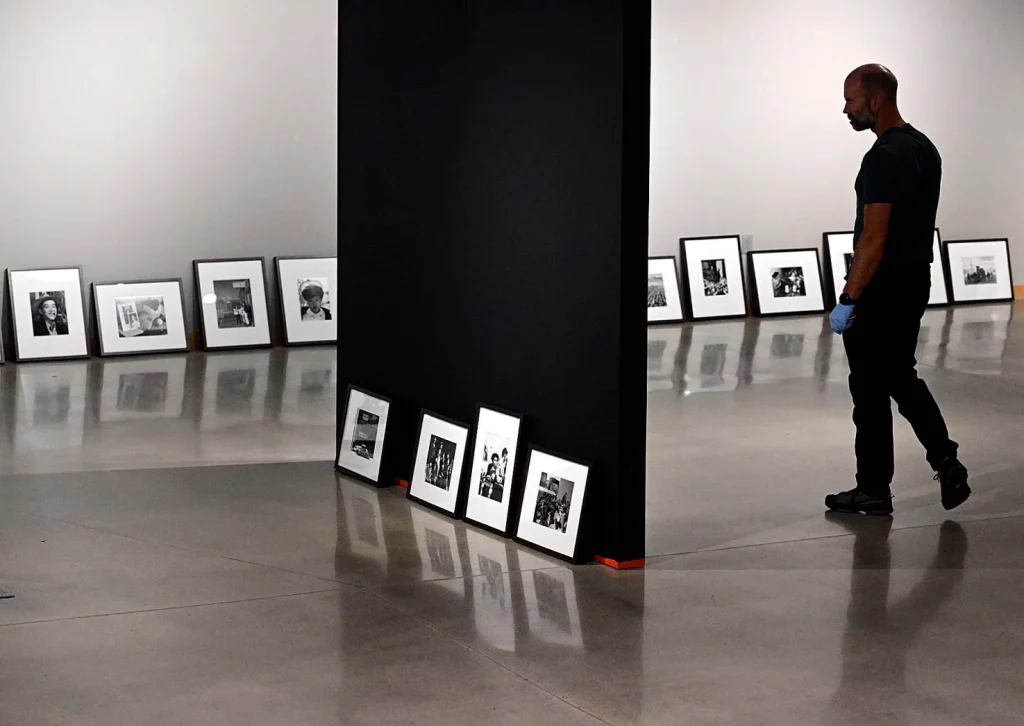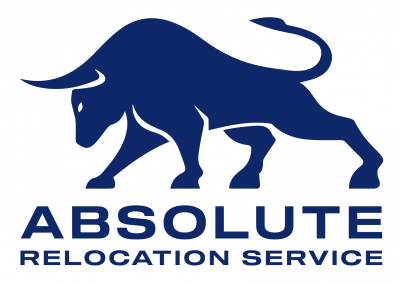Museum Relocation
Museum relocation is not only about moving exhibits and artefacts from one place to another. It is a complex process inextricably linked to the preservation of cultural heritage and historical values. A museum, being a repository of unique collections and expositions, plays a key role in preserving and passing on knowledge and historical facts to the next generations.
A museum relocation can be for a variety of reasons, including the need to expand exhibit space, renovate a building, or even geographically relocate to increase accessibility for visitors. But regardless of the reason, every museum move comes with a number of unique complexities and challenges.
One of the biggest challenges is the need to secure exhibits during transportation. Museum collections often include fragile and valuable items that require special care and attention during packing, transporting, and unloading. In addition, each exhibit may have unique characteristics and features that require a customised approach to its movement.
Another important challenge is organising transport over long distances or even international borders. Long-distance museum moves require careful planning and coordination, as well as the use of specialised services of international movers and shippers. The process can be complex and costly, especially when transporting large or unique exhibits.
Thus, moving a museum is a complex and demanding endeavour that requires a professional approach and attention to every detail. In the following sections, we will look at the main stages of a museum move and the role of museum movers in this process.
Preparing for a move

A museum move can be for a variety of reasons, including the need to expand exhibit space, renovate a building, or even geographically relocate to increase accessibility for visitors.
Regardless of the reason, however, every museum move comes with a number of unique complexities and challenges. One of the biggest challenges is the need to secure exhibits during transportation. Museum collections often include fragile and valuable items that require special care and attention during packing, transporting and unloading. Each exhibit may have unique characteristics and features that require a personalised approach to moving it.
For a successful museum relocation, it is critical to choose the right moving company. The role of this company is huge, as the safety and integrity of museum exhibits depends on its professionalism and competence. When choosing a company you should pay attention to such factors as geographical coverage, experience, reliability and availability of the necessary equipment for transport.
The wide geographical coverage of a moving company allows it to provide all stages of the move, including local, long distance and international relocation. The company’s experience and reliability are key factors in ensuring the safe moving of museum collections. Experienced movers have the necessary knowledge and skills to ensure the safe transport of museum collections.
To meet the needs of the museum, the mover must provide a variety of transport options, including the use of trucks, containers and specialised packing materials. Each exhibit has its own unique characteristics, so a method of move should be chosen with them in mind. Some exhibits may require special conditions of temperature, humidity, or vibration protection.
An important aspect of preparing for a museum move is the possibility of temporary storage of exhibits. In case of long moves or the need to divide the move into phases, the moving company should provide temporary storage services. Storage conditions should meet the requirements of safety and security of museum exhibits.
Special attention should be paid to the issue of working with local and long-distance movers. Local carriers often have a better understanding of local conditions and requirements, which can be helpful when transporting museum exhibits. At the same time, long-haul movers provide wide area coverage and the ability to transport over long distances.
Thus, preparing for a museum move requires careful selection of a museum moving company and careful planning of all stages of transport, taking into account the peculiarities of working with local and long-haul carriers.
Organising local and long-distance moves

Organising a local and long-distance museum move has its own characteristics and challenges.
A local move usually involves shorter distances and less time-consuming transport. This allows for more flexibility in planning the packing and transport of exhibits. Local removals focus on packing exhibits correctly to minimise the risk of damage during transit. Specialised packing materials such as soft shells, foam and air cushions are often used for this purpose. Exhibits are placed in boxes or containers as tightly packed as possible to avoid movement during transport.
Long distance museum relocation presents more complex challenges due to the longer distances involved and longer transport time. Additional factors such as road conditions, customs formalities and the need to use special modes of transport such as containers or specialised trucks are taken into account for long-distance moves. The packing and transport process for a long-distance move also involves more careful preparation and protection of exhibits. Additional services may also be required, such as cargo insurance and tracking of the transport along the way.
There are a number of criteria to consider when choosing specialised services for local and long-distance museum moves. It is important to consider the experience and reputation of the company in the field of transporting museum exhibits, as well as the availability of the necessary equipment and qualified specialists. It is also worth paying attention to the degree of protection and security provided by the company, as well as the possibility of temporary storage and cargo insurance. Specialised services for local and long-distance museum moves must meet high standards of safety and security of valuable exhibits.
International museum relocation

International museum relocation is a special challenge because of the need to overcome borders and comply with international rules and regulations. The peculiarities of international transport of museum exhibits include not only transport across long distances, but also compliance with international customs and cultural regulations.
One of the key aspects of international museum relocation is choosing the right international mover or shipper. These companies specialize in international removals and have the necessary knowledge and experience to ensure safe and secure delivery of museum collections anywhere in the world. They have knowledge of international customs and cultural regulations, and are experienced in dealing with the various problems that can arise during transport across borders.
Some countries have particularly strict regulations on the import and export of museum objects, most often related to preserving cultural heritage and combating the illicit trade in artefacts. Here are some examples:
USA: The United States has laws and regulations governing the import and export of valuable artefacts and art. For example, antiquities protected by a US National Park or other historical monuments may require special permission to move across the border.
Mexico: Mexico has a rich cultural heritage that includes archaeological finds and art from ancient civilisations such as the Aztecs and Mayans. The Mexican government strictly controls the export of archaeological finds and art, requiring special permits and licences to export abroad.
Italy: Italy is home to many historical and cultural treasures, and the country’s government strictly regulates the export of antiques and artwork. Exhibits such as sculptures, paintings and artefacts may be subject to special inspection and require special export permits.
Egypt: Egyptian authorities have strict regulations on the export of archaeological finds and antiquities. Exhibits related to ancient Egypt may be subject to strict inspection and may require special permits to leave the country.
The process of international transport of museum exhibits usually involves the following steps:
Document preparation
Transporting museum exhibits across borders requires various documents and permits such as customs declarations, certificates of origin, temporary export and import permits and others.
Packaging and labelling
Exhibits should be carefully packaged and labelled to facilitate customs clearance and minimise the risk of damage during transit. This includes using special packaging materials and labelling each exhibit with its contents, value and other information.
Choice of transport options
International transport of museum collections can be carried out by various modes of transport, including air, sea and land transport. The choice of the best option depends on many factors, such as delivery time, type of exhibits, budget and safety requirements.
Transporting museum exhibits abroad usually requires various documents in accordance with the laws of the sending and destination countries. Here are some typical documents that may be required:
- Customs declaration: A document that specifies all goods being transported and their value. The declaration may be required both when leaving the country of origin and when entering the country of destination
- Certificate of Origin: This document confirms the place of origin of the exhibit and may be required for customs control and tax purposes.
- Licences and permits: Some countries require special licences or permits for the export and import of certain types of museum objects, especially if they form part of the cultural heritage.
- Documentation of origin and authenticity: In the case of valuable artefacts or works of art, documentation of origin and authenticity may be required.
- Inventory lists: Lists of all exhibits transported, with detailed descriptions of each one, may be required for record-keeping and control purposes.
With regard to duties, requirements may vary according to the country of departure and the country of destination, as well as the type and value of the exhibits being transported. In some cases, customs duties and taxes may be imposed on the import or export of certain categories of exhibits. Detailed information on the necessary documents and duties should be obtained from the competent authorities or from an international carrier specialising in the international transport of museum exhibits.
Distance and storage

Distance management in long-distance museum moves represents one of the main challenges faced by organisers and movers. Long distances between destinations can affect delivery times, the condition of exhibits during transit, and overall moving costs. Various strategies and technologies are used to address these challenges.
One of the key aspects of distance management is choosing the most appropriate mode of transport. Various modes of transport are commonly used for long-distance museum moves, including road trucks, rail wagons, containers and air transport. Each mode of transport has its own advantages and limitations and the choice depends on many factors such as distance, delivery time, cost and exhibit features.
Another challenge is maintaining optimum transport conditions throughout the journey. Exhibits can be extremely sensitive to temperature changes, humidity and vibrations, so measures must be taken to ensure their safety during transit. This may include the use of specialised temperature and humidity controlled vehicles, as well as additional security measures such as stabilisation and packing.
An important aspect of distance management is the temporary storage and warehousing of exhibits during the move. Transporting museum collections can take considerable time, especially for long-distance moves or when it is necessary to divide the transport into stages. In such cases, temporary storage of exhibits in a warehouse may be necessary to ensure their safety and security. Storage facilities should fulfil all safety and security requirements and have optimal storage conditions, including temperature control, humidity control and security from external threats.
Completing the move and the new location

Completing a museum move involves not only delivering the exhibits to the new location, but also unloading, unpacking and installing them in the new location. This process requires careful organisation and coordination to ensure that valuable museum collections are safeguarded and properly housed.
The first step in completing the move is to unload the vehicles carrying the exhibits. This may involve the use of specialised equipment such as cranes or forklifts to unload heavy and bulky items safely and efficiently. This should ensure that the exhibits are properly positioned in the warehouse or museum space before the unpacking and installation process begins.
After unloading, the unpacking process begins. Each item should be carefully inspected for any damage or deformation that may have occurred during transport. Packaging materials such as film, foam and bubble paper are then carefully removed to prevent damage to the exhibit itself.
After unpacking, the process of installing the exhibits in their new location begins. This may involve placing the items on stands, display cases or special platforms according to the design and concept of the exhibition space. Each exhibit should be installed in such a way that it is safe, easy to view and secure for the duration of the exhibit.
An important aspect of completing the move is to thoroughly document all steps of the process. This includes taking inventory lists, photographing and describing each exhibit, and recording any damage or discrepancies found. This information will help to ensure the effective management and preservation of museum collections in the future.
Conclusion

In conclusion, the transport of museum exhibits is a complex and responsible process that requires a high level of professional preparation and organisation. The importance of professional local and international organisation of museum relocation can hardly be overestimated, as the preservation and integrity of valuable historical artefacts depends on it.
The work of movers plays a key role in this process, ensuring the safe and secure delivery of exhibits to their new location. They have the necessary expertise to carefully pack, transport and install the collections, ensuring their safety and integrity. Thus, the professional local and international organisation of museum relocation and the role of movers in this process play a crucial role in preserving and promoting the cultural heritage of humanity.
Cooperation with Absolute Relocation Service, provides not only professional local and international organization of moving museum exhibits, but is also based on our extensive experience and high reliability. Our specialists have many years of experience in the field of muving and have in-depth knowledge of safe transportation of valuable items. Our company is known for its reliability and professionalism, which makes us the ideal partner for the transportation of museum collections, where each exhibit has a high historical and cultural value.
Contact us in any way:
Telephone: (954) 773-9667
E-mail: abs@absoluteinc.org





